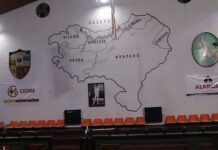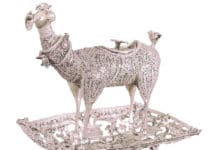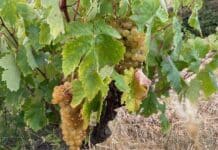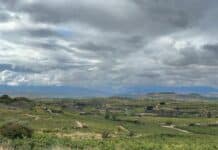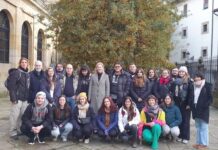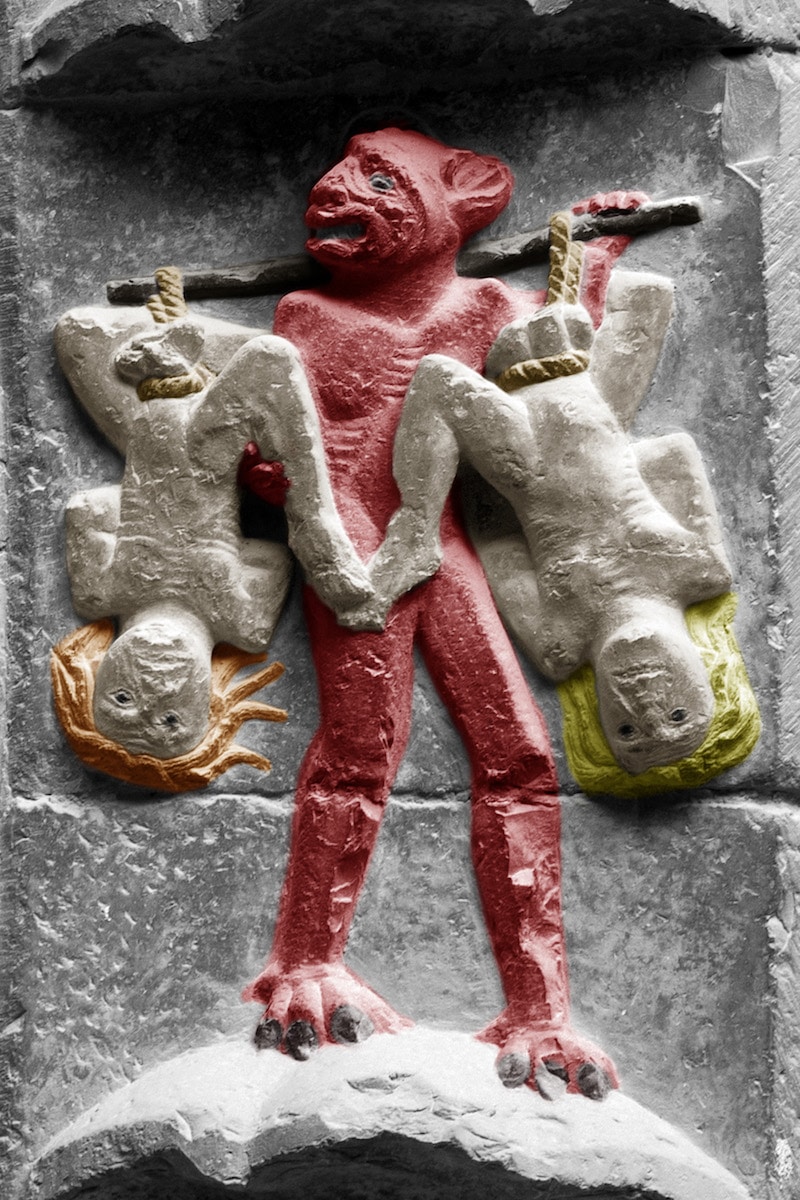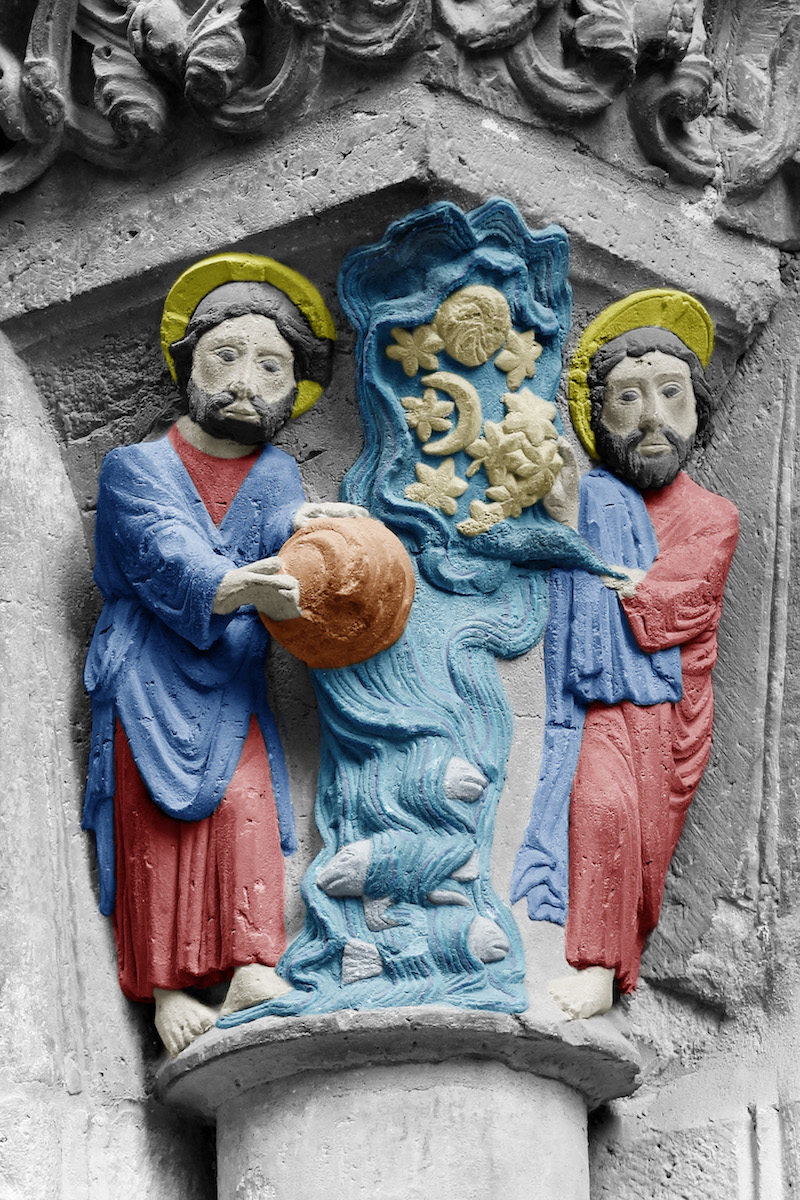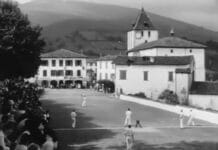Blanca Aldanondo Otamendi (photographer)
Graphic journalist in several media since 1987. Since 2007, photographer for the Diario de Navarra in the Tudela and Ribera delegation. In 2012, she received the Teobaldo Prize for best press photographer.
Diego Carasusán Cermeño (journalist)
Journalist for the Diario de Navarra since 1998, when he began his career as a reporter for the Tudela and Ribera delegation. Author of the book “Txapeldunak!”, dedicated to the 25th anniversary of the first League win of the Real Sociedad de Fútbol.
Here on the blog, we’ve traveled to the Navarrese Ribera region many times, especially to its largest city, Tudela. Oftentimes, this has been in our Viewpoints section, when discussing the Bardenas Reales, or our visit to Tudela.
As we always do when discussing why we went to that area the first time, as bloggers, it was the “fault” of Santi Lorente, the creator of one of the most attractive tours there and throughout the whole Ribera region.
“Going for broke”, and given the huge interest they generated, we then went on to publish two texts written by Santi himself. One of them, the Tales to Stay at Home, were written during the covid-19 pandemic. The other, later on, was a summary of the tragedy of the repression, persecution, and death caused by the military insurrection of 1936, which we published in the Basque Chronicles section.
A few days ago, when we were speaking with Santi about the beautiful photos he shared with us from the Bardenas covered in snow (which of course we published), he told us about the publication of a new app which showed how the Door of the Judgment, the main entrance to Tudela Cathedral, looked to the faithful when it was opened 800 years ago. This masterpiece of early Gothic art was almost like a comic, allowing the faithful, who were largely illiterate, to better understand the essential concepts the Church wanted to convey.
The doors of these churches seem to be a kind of portal that connected the earthly realms with the heavenly ones found inside, a king of transition between the two spheres.
And if that feeling can again be achieved today, that feeling of something very special when crossing that threshold, we can’t imagine what it was like eight centuries ago, when its Technicolor shine made it simply extraordinary for the peoples at the time.
The extraordinary work of Diego Carasusán and Blanca Aldanondo in their book and on the app about this cathedral’s Door of the Judgment lets us get a taste of the wonder and the magic, even though such spectacular things are far more commonplace than they would have been in the Middle Ages. Plus, great details are given, so we too can know what story the Church was trying to tell and what everything we see there means.
By the way, before “handing over the mic” to those who really understand this work of art, we couldn’t resist commenting on something that really grabbed our attention. At this Door of the Judgment, the area dedicated to hellish punishments is far greater than appeared in other doors of similar characteristics. This must have meant that those who had the door designed saw the townsfolk as especially “sinful”. And that’s why half of the area is designed to show what punishments await those who do not follow the Commandments and/or who fall into the clutches of the “deadly sins”.
We’d like to remind our readers that they can download the app in order to enjoy the door on their phone, be it iOS (Apple) or Android. Just search for “Puerta del Juicio”.
Plus, you can also see all this amazing work directly on your PC by following the link found below. Please do, it’s really worth it.
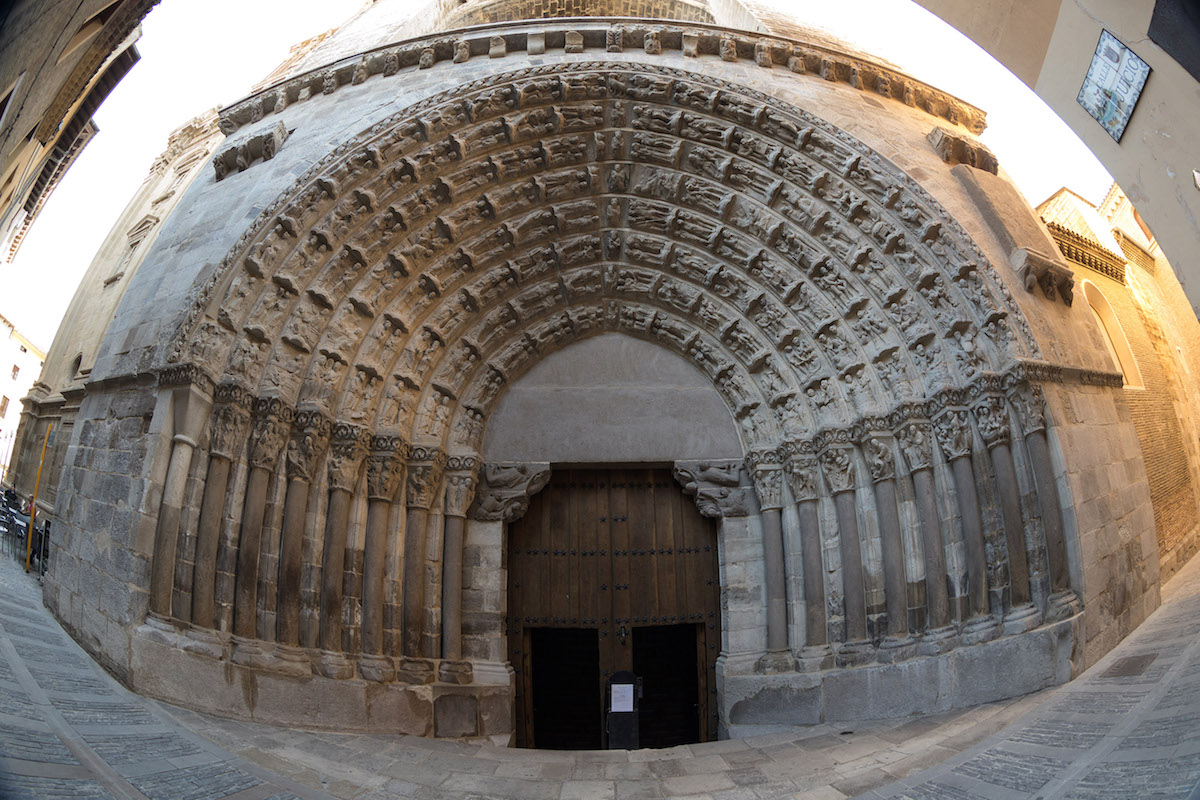

La Puerta del Juicio de Tudela
Blanca Aldanondo Otamendi (photographer)
Diego Carasusán Cermeño (journalist)
In the heart of the Old Town of Tudela, like a treasure hidden away in the narrow, winding streets, stands the door known as the Door of the Judgment, the main entrance to the city’s cathedral.
For over 800 years this monumental work of art, somewhere between Romanic and Gothic, has been beheld, and beyond its usefulness as an entrance to the church, it was erected as a clear tool for teaching and moralizing, aimed at a people who were largely illiterate.
So, the designer of the doorway used the voussoirs that made up the arch as a base to sculpt 150 scenes that spell out in images the tale of the Book of Revelations, specifically the part about the Final Judgment, and the fate that on that day awaits those who will rise to the Kingdom of Heaven and those who will be damned to Hell.
A Medieval Comic
In order to decipher the contents of each of the 150 vignettes of this unique medieval comic, seven years ago, we began digging deep into the ample documentation which can be found about the Door of the Judgment but which failed to condense the meaning of its carvings into a single work.
First, we had to understand the hidden meaning in each of the sculptures in the archway, so to do that, we divided the whole into four separate sections.
In the first, we find the column capitals which supported the weight of the arch. These are dedicated to Genesis, and explaining how, according to the Church, God created the world, the animals, and the plants, and man and woman; how sin emerged in Eve and how she convinced Adam to eat the forbidden fruit, and how Cain killed his brother Abel. But we can also find a sculpture of redemption as personified in Abraham, right at the moment when God stops him from sacrificing his son Isaac, and in Noah, and the salvation he found in the arc he built right before the Flood.
This part of the Door, dedicated to Genesis, makes up the “prologue” of what would be an enormous stone book that shows the viewer what the Final Judgment as described in the Bible would be like. This way, in one look, it is clear how the Church sees the beginning of the world, and its end.
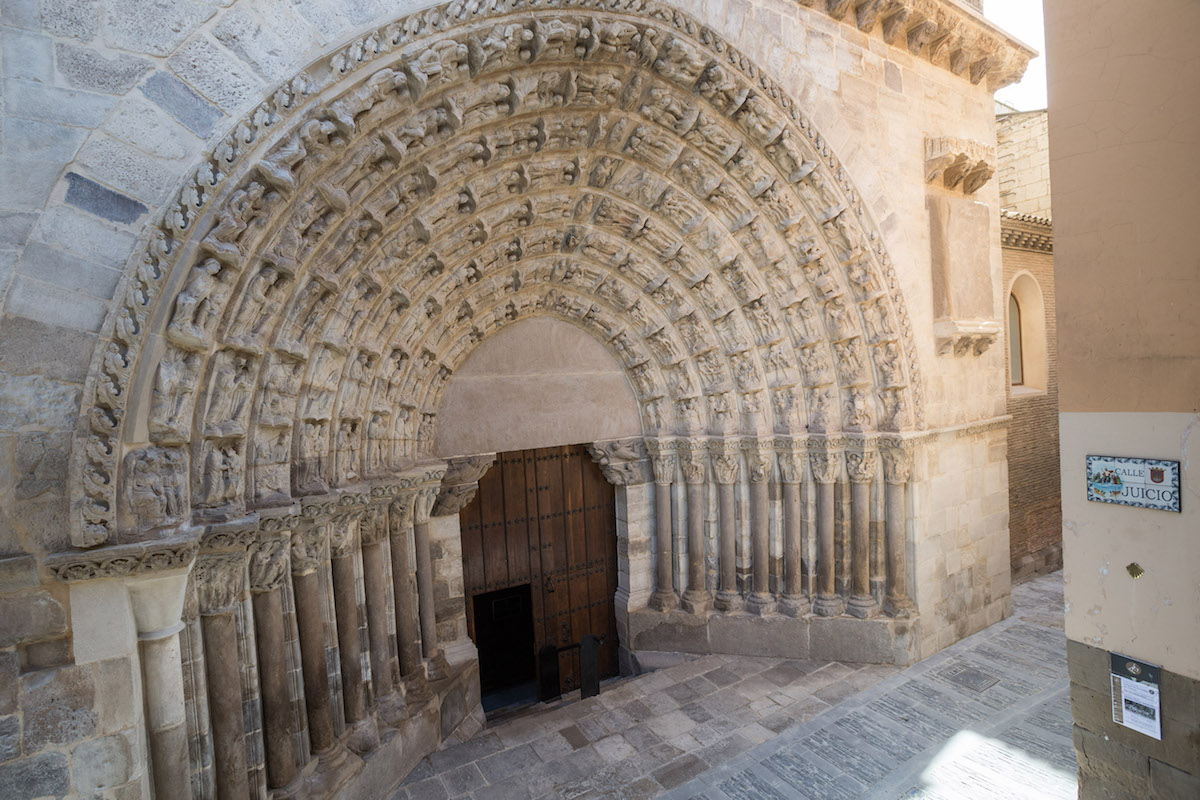

And that is how the door shows the Church’s view of Heaven, made up of 48 stones showing scenes of the saved enjoying their reward for the good acts they did in life; and in hell, with 50 stones, showing the damned undergoing the worst punishments imaginable.
The layout of Hell on the right and Heaven on the left can be explained by analyzing the last section, which we called Common Elements, which can be found in the center of the arch. In it, there are scenes which belong neither to Heaven nor to Hell, but which are key in the story of the Final Judgment. There, we can find Apostles and Evangelists escorting the image of the Lamb of God, and a considerable number of angels waiting for Christ the Judge to pass sentence in order to lead the saved to Heaven and the damned to Hell. Christ the Judge himself does not appear in the sculptures, as he was eroded away over the centuries, but he must have been in the tympanum, blessing the blessed with his right hand, and damning the sinners with his left. And that is why, from the viewer’s point of view, Heaven and Hell are on opposite sides.
A Most Unique Hell
And it is that part of the door dedicated to Hell that makes the Door of the Judgment of Tudela unique in the entire world, as there is no other cathedral entrance in all of Christendom that devotes half its surface area to explaining the punishments that await the damned.


The profusion of agonies sculpted in the archway is so great that the designer ran out of tortures laid out in Christian works and had to turn to Jewish and Muslim legends, told in the Tudela of Three Cultures of those days, to fill up the space and finish the work.
The sin represented the most in this particular Tudela depiction of Hell is Greed, occupying 22 of the 50 voussoirs. Sculpted in them are trade workers of the time, such as a butcher, a draper, and a baker, all damned for defrauding their customers by lying about the quantity and quality of their products. So, by showing the viewer scenes of daily life, the archway designer was able to transmit his message to the viewer, ensuring his message would be received most effectively.
After Greed, the second most represented sin in the archway of the Judgment is Pride. And here not only are ordinary folk shown, but also sinners from the other two Estates, the Clergy and the Nobility. We can find monks, abbots, bishops, noblemen, and members of royalty, and thus understand that regardless of one’s condition in life, no one may be saved from Hell if they did not fulfill the obligations of their office while alive.
Lust is another of the Deadly Sins featured around the Door. It is in the scenes dedicated to this vice that one can see one of the standards repeated in the Tudelan Hell, that of showing the damned being punished in the body part or organ used to commit sins in life. So, the lustful woman is bitten by a snake in her vulva, and the sodomites suffer by being hanged by a rope tied to their genitals.
The list of Deadly Sins is completed with several examples dedicated to the punishment of Gluttony and Sloth, without of course, forgetting the last two, Envy and Wrath.
So, beyond the mere religious message, the Door of the Judgment is a social chronicle of 13th-century Tudela, showing the hopes and fears of the inhabitants of the city like an open newspaper from eight centuries ago. As can be seen, those hopes and fears are not very different to those of today.
The “Painted” Door
The second part of the work, starting in 2013, led us to making an artistic recreation of what the Door of the Judgment might have looked like when it was built eight centuries ago.
And that led us to offering a multicolor image of each one of the 150 pieces, basing our choices on the chromatic palate used by the artists of the day, always basing that choice on works whose colors have not faded over time.
The digital application of layers of color to each element served to highlight details that, by themselves, contribute more information to the interpretation of each voussoir and capital; most importantly, they served to put together an overall image of the door in its full-color glory, showing the people of Tudela today what the people of Tudela back then got to feel when such an amazing work of sculpture was revealed to them.


Book and App
The three years spent studying the Door of the Judgment bore fruit in the publication of a book, La Puerta del Juicio, Tudela-Navarra, published by the Diario de Navarra in collaboration with the Government of Navarre, the City of Tudela, and the Association of Friends of the Cathedral of Tudela.
Currently the book is out of stock, and is awaiting what will be its fourth reprint.
In any case, those interested in knowing the results of the study can find them via the app that the UNED center in Tudela created based on the book. It can be downloaded free of charge on any Android or iOS device in their respective app stores under the name “Puerta del Juicio Tudela”, or by following this link:
Door of the Judgment in Tudela
Online version
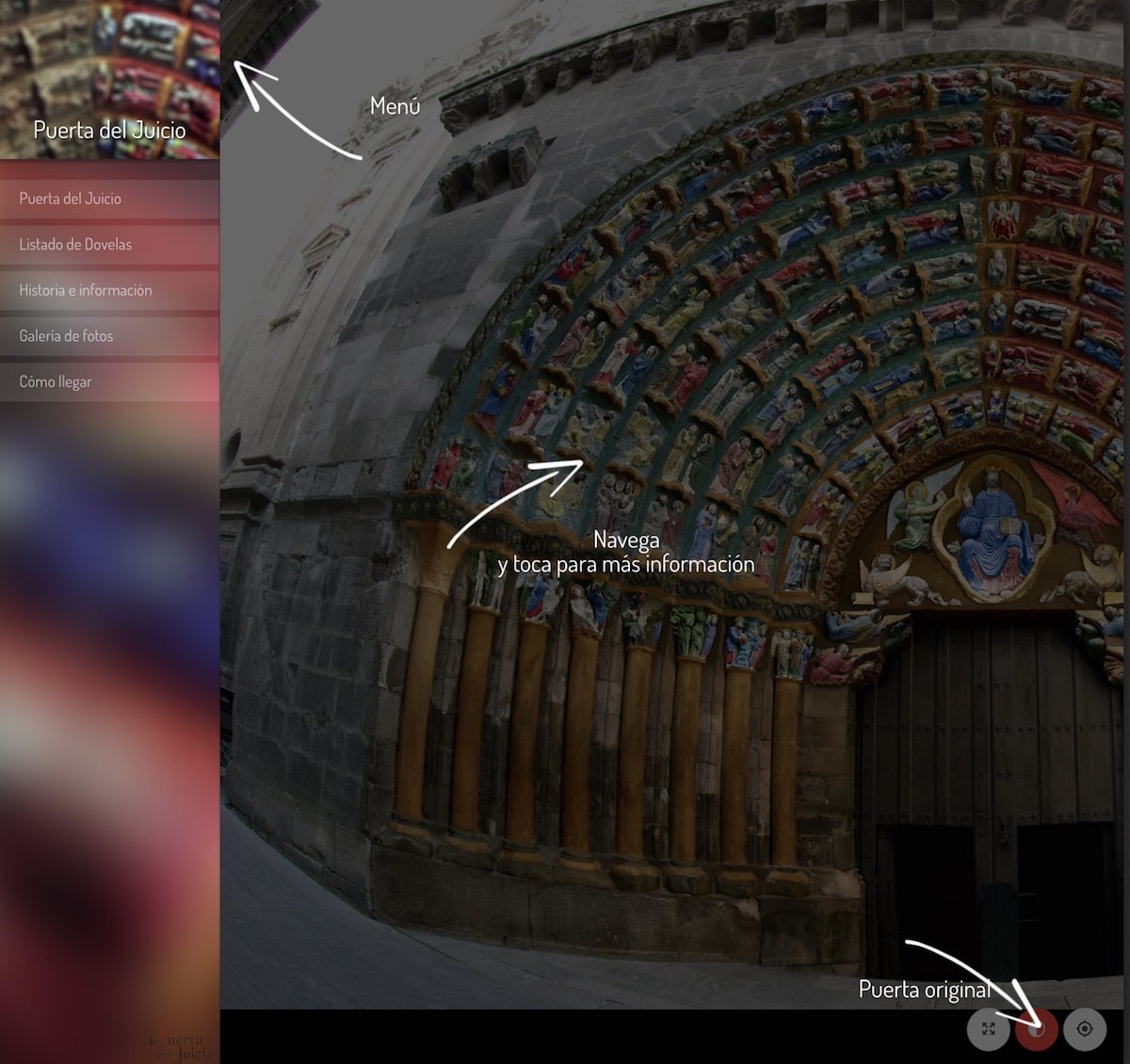

(Follow)
All photos by Blanca Aldanondo Otamendi
Last Updated on Jan 27, 2021 by About Basque Country




